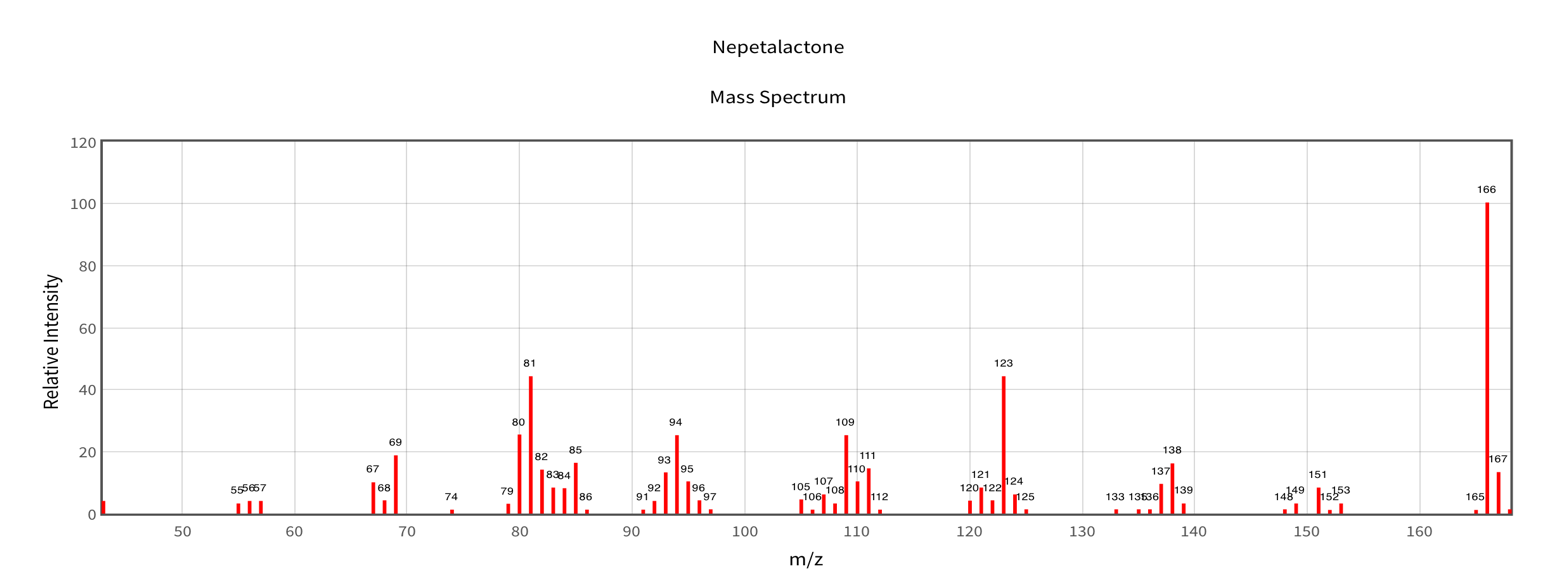STANDARDIZATION OF ESSENTIAL OIL OF NEPETA СATARIA L. (CATNIP OIL)
UDC 615.072:615.32
Abstract
The purpose of the article was to study and develop approaches to the standardization of the essential oil obtained from the herb of the catnip (Nepeta cataria L.) which was achieved by solving the following tasks: obtaining the essential oil, choosing the parameters of its standardization and normalizing them, studying the component composition and choosing the marker compound followed by quantitative assessment. GC-MS method was used to determine the composition and the major components of the essential oil. The dominant component is nepetalacton (29.74%). Quality indicators (general appearance, transparence, colour, odour, solubility, presence of alcohol, water, foreign esters, fatty oils and resinified essential oil, loss on drying, relative density, optical rotation, refractive index, acid value), which will be further used in the development of regulatory documents (draft monograph for the Pharmacopoeia) on the catnip essential oil have been determined and normalized. The gas chromatography method for quantitative determination of nepetalactone of catnip oil has been developed and validated. The content of nepetalacton in catnip oil, determined by the GC method, was 42.37%. Statistical processing of the obtained results showed that all the validation parameters are within acceptance criteria, therefore, the recommended method can be used in the analytical laboratory to assess the quality of catnip oil.
Downloads
Metrics
References
Janardhanan M. Herb and spice essential oils. Discovery Publishing House, 2004, 120 p.
Preedy. V.R. Essential oils in food preservation, flavor and safety. Academic Press, 2015, 930 p.
Worwood V.A. The Complete Book of Essential Oils and Aromatherapy, Revised and Expanded: Over 800 Natural, Nontoxic, and Fragrant Recipes to Create Health, Beauty, and Safe Home and Work Environments. New World Li-brary, 2016, 448 p.
Nguyen T.H.Y., Terninko I.I. Sbornik materialov XI nauchno-prakticheskoy konferentsii molodykh uchenykh i studen-tov TGMU im. Abuali ibn Sino s mezhdunarodnym uchastiyem «Meditsinskaya nauka: dostizheniya i perspektivy». [Collection of materials of the XI scientific-practical conference of young scientists and students of TSMU named after Abuali ibn Sino with international participation "Medical science: achievements and prospects"]. Dushanbe, 2016, pp. 351–352. (in Russ.).
Petenatti M.E., Petenatti E.M., Del Vitto L.A., Téves M.R., Caffini N.O., Marchevsky E.J., Pellerano R.G. Revista Bra-sileira de Farmacognosia, 2011, vol. 21, no. 6, pp. 1144–1149. DOI: 10.1590/S0102-695X2011005000129.
Gilani A.H., Shah A.J., Zubair A., Khalid S., Kiani J., Ahmed A., Rasheed M., Ahmad V.U. Journal of ethnopharma-cology, 2009, vol. 121, no. 3, pp. 405–411. DOI: 10.1016/j.jep.2008.11.004.
Adiguzel A., Ozer H., Sokmen M., Gulluce M., Sokmen A., Kilic H., Sahin F., Baris O. Polish Journal of Microbiolo-gy, 2009, vol. 58, no. 1, pp. 69–76.
Aydin S., Beis R., Ozturk Y., Husnu K., Baser C. Journal of Pharmacy and Pharmacology, 1998, vol. 50, no. 7, pp. 813–817. DOI: 10.1111/j.2042-7158.1998.tb07145.x.
Handjieva N.V., Popov S.S., Evstatieva L.N. Journal of Essential Oil Research, 1996, vol. 8, no. 6, pp. 639–643. DOI: 10.1080/10412905.1996.9701032.
Heuskin S., Godin B., Leroy P., Capella Q. Journal of Chromatography A, 2009, vol. 1216, no. 14, pp. 2768–2775. DOI: 10.1016/j.chroma.2008.09.109.
Malizia R.A., Molli J.S., Cardell D.A. Journal of Essential Oil Research, 1996, vol. 8, no. 5, pp. 565–567. DOI: 10.1080/10412905.1996.9700691.
Regnier F.E., Waller G.R., Eisenbraun E.J. Phytochemistry, 1967, vol. 6, no. 9, pp. 1281–1289. DOI: 10.1016/S0031-9422(00)86090-2.
Saharkhiz M.J., Zadnour P., Kakouei F. American Journal of Essential Oils and Natural Products, 2016, vol. 4, no. 1, pp. 40–45.
Campanini E. Dizionario di fitoterapia e piante medicinali. 2th edition. Milan: Tecniche nuove, 2004, 685 p.
Kumar V., Mathela C.S., Tewari G., Singh D. Industrial Crops and Products, 2014, vol. 55, pp. 70–74. DOI: 10.1016/j.indcrop.2014.02.003.
Shafaghat A., Oji K. Natural product communications, 2010, vol. 5, no. 4, pp. 625–628. DOI: 10.1177/1934578X1000500427.
Gosudarstvennaya farmakopeya Rossiyskoy Federatsii 13-ye izd. [State Pharmacopoeia of the Russian Federation 13th ed]. Moscow, 2015, vol. 1, 1470 p. (in Russ.).
European Pharmacopoeia 8-th ed. Strasbourg: EDQM Council of Europe, 2014.
Terninko I.I., Nguyen T.H.Y. Farmatsiya, 2016, no. 8, pp. 5–8 (in Russ.).
Terninko I.I., Nguyen T.H.Y. Reviews on Clinical Pharmacology and Drug Therapy, 2016, vol. 14, pp. 58–59.

Copyright (c) 2020 Khimiia rastitel'nogo syr'ia (Chemistry of plant raw material)

This work is licensed under a Creative Commons Attribution 4.0 International License.

This work is licensed under a Creative Commons Attribution 4.0 International License.
The authors, which are published in this journal, agree to the following conditions:
1. Authors retain the copyright to the work and transfer to the journal the right of the first publication along with the work, at the same time licensing it under the terms of the Creative Commons Attribution License, which allows others to distribute this work with the obligatory indication of the authorship of this work and a link to the original publication in this journal .
2. The authors retain the right to enter into separate, additional contractual agreements for the non-exclusive distribution of the version of the work published by this journal (for example, to place it in the university depository or to publish it in a book), with reference to the original publication in this journal.
3. Authors are allowed to post their work on the Internet (for example, in a university repository or on their personal website) before and during the review process of this journal, as this may lead to a productive discussion, as well as more links to this published work.











